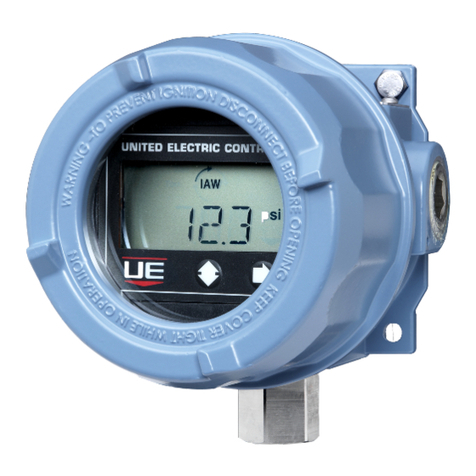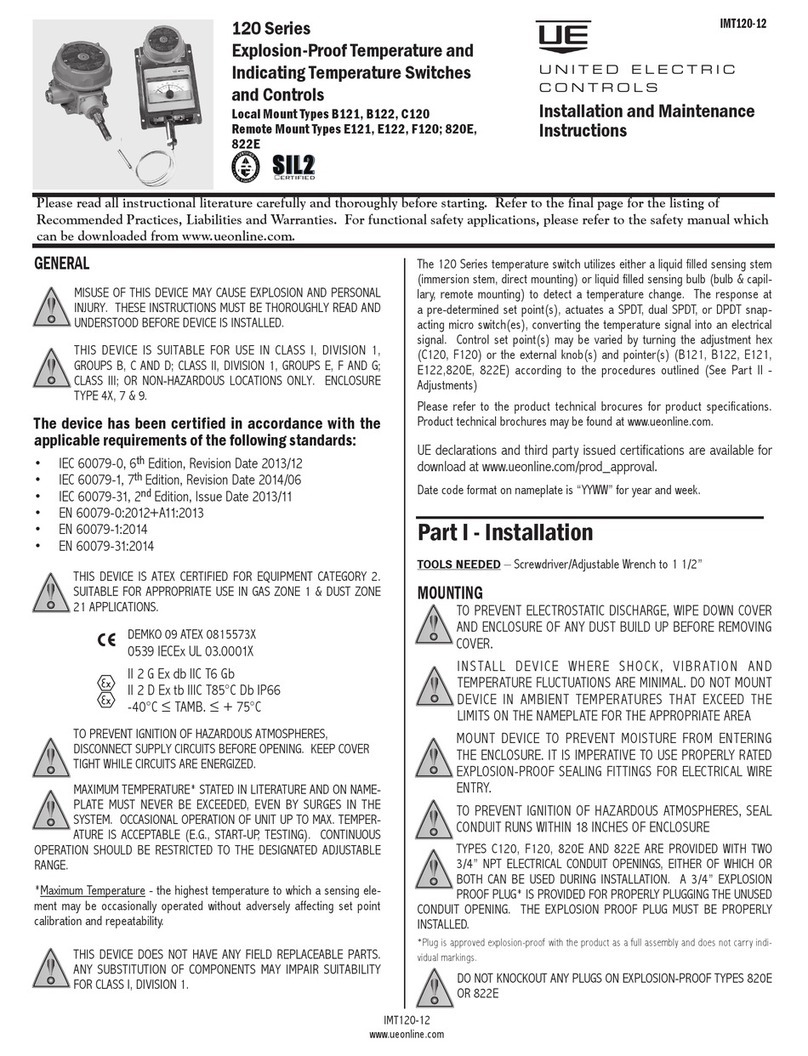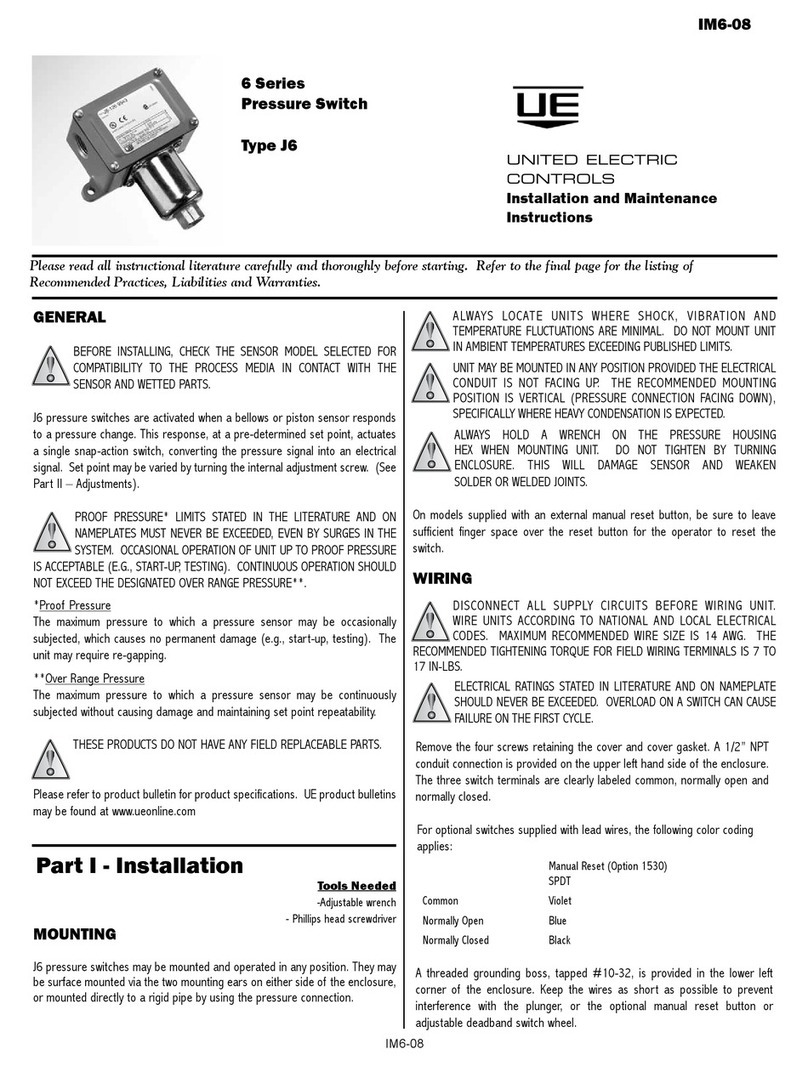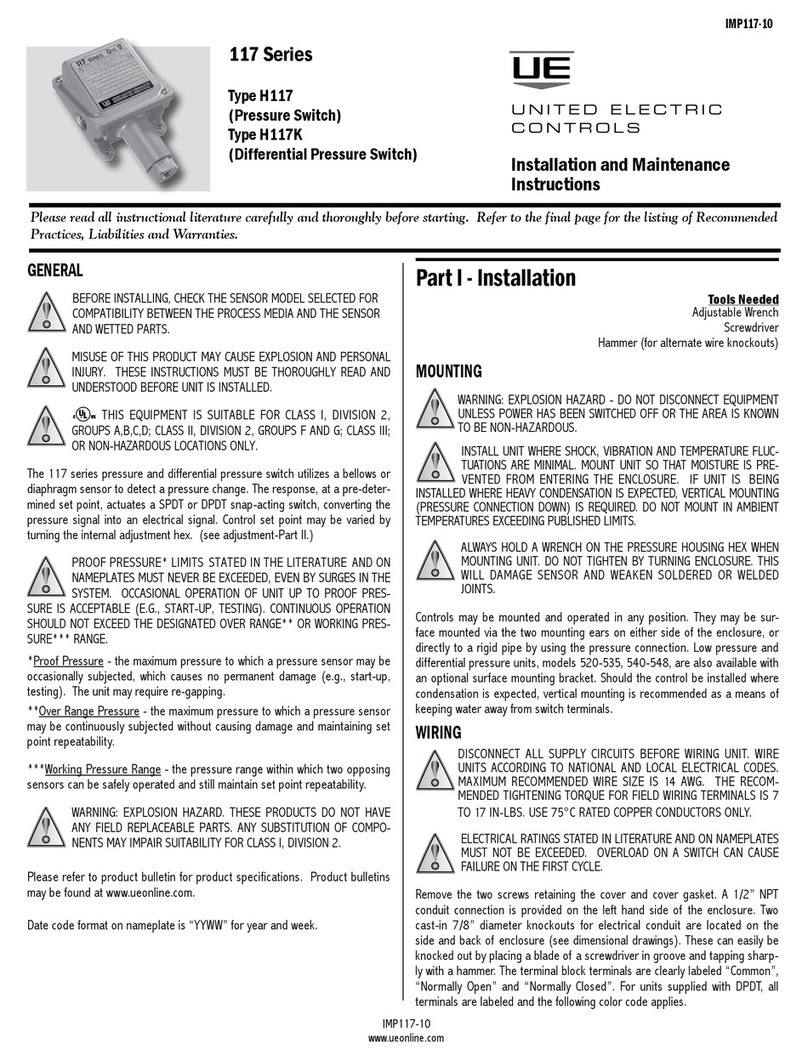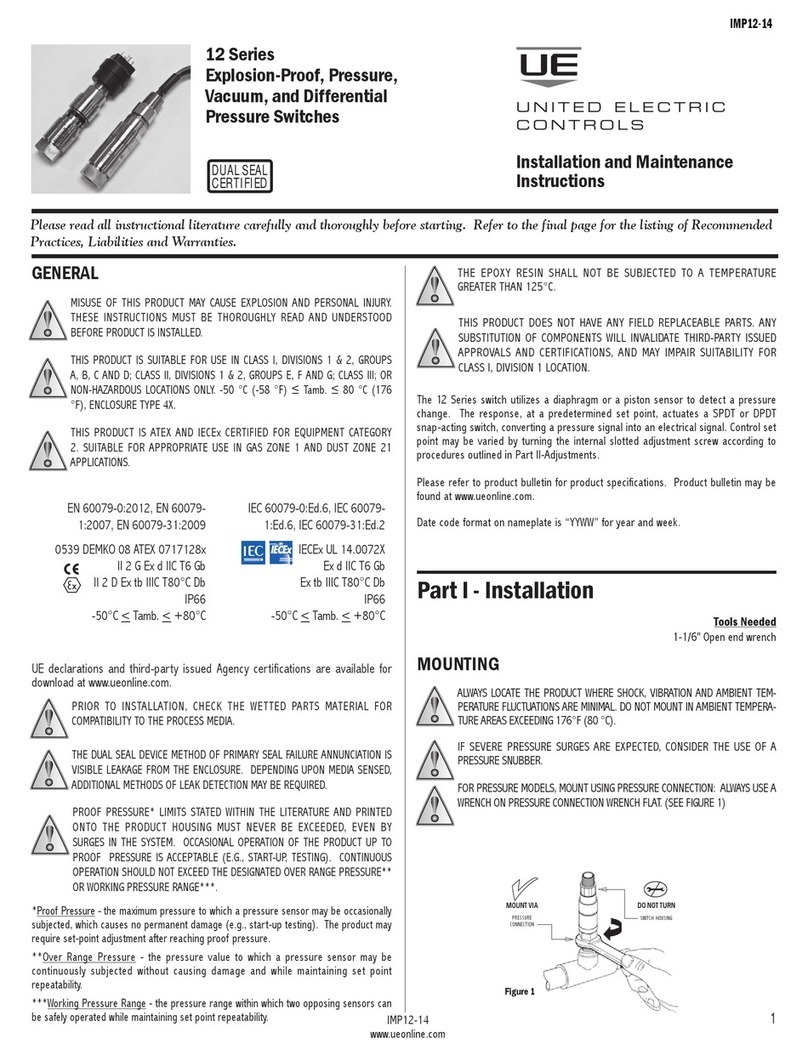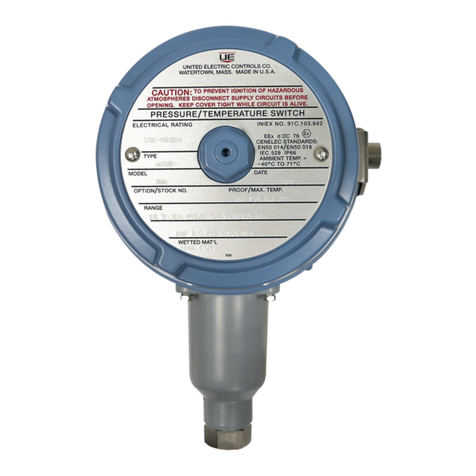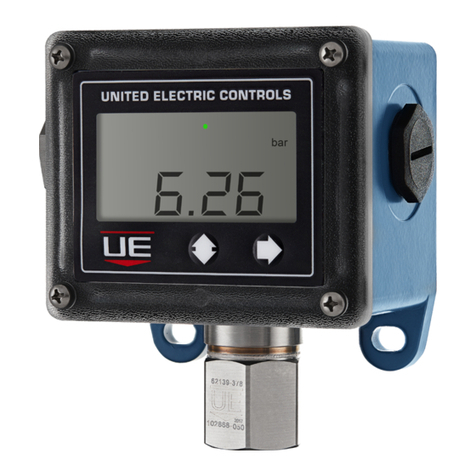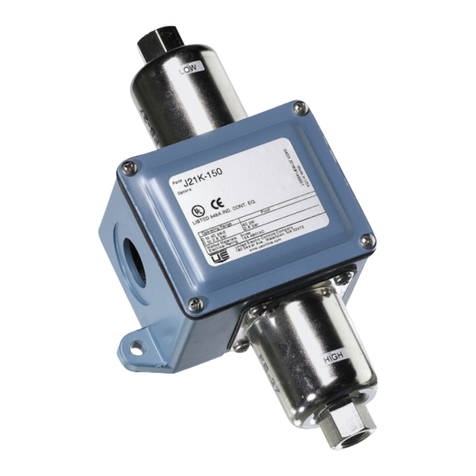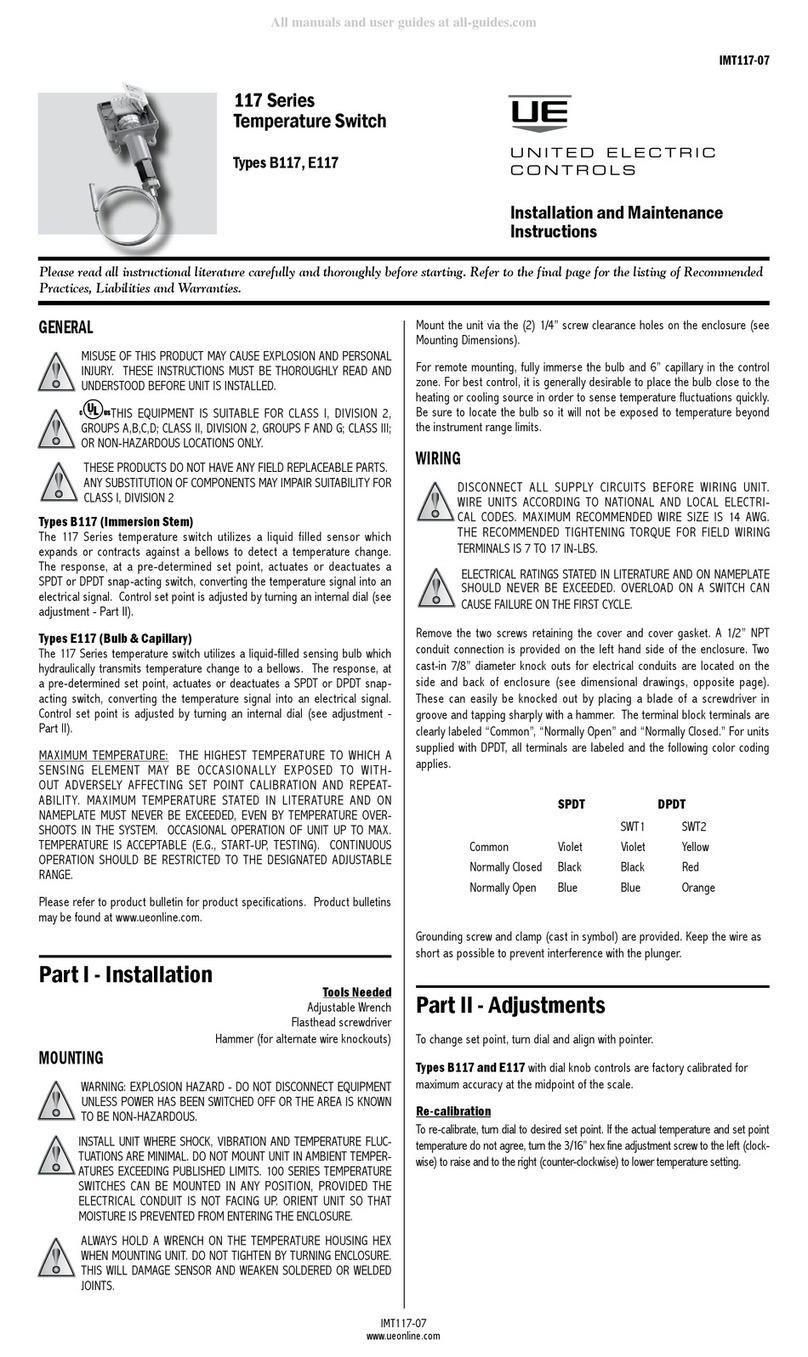EXPLOSION-PROOF SEALING FITTINGS FOR ELEC-
TRICAL WIRE ENTRY. DO NOT MOUNT UNIT IN
AMBIENT TEMPERATURES LOWER THAN -40°F
(40°C) OR HIGHER THAN 160°F (71°C).
Types J120, J120K, H121, H121K, H122,
H122K, H122P
Mount controls vertically (pressure connection facing
down, See Figure 1a) or horizontally (electrical condui
facing up, See Figure 1b). Either mounting position will
properly orient the venting system. Control may be
surface mounted via the four 1/4” screw holes on the
enclosure or mounting bracket. It can also be mouned
directly to a rigid pipe using the pressure connection.
Types J120K, H121K, H122K Opposed Sensor
Differential Pressure Models 36-39, (S)147(B)-(S)157 (B),
367
“Opposed sensor” differential pressure controls should
be mounted with their pressure connection in the
horizontal position (See Figure 2). This will properly ori-
ent the vent holes on the pressure housing as well as
the 1/4” NPT venting conduit at the bottom of the third
compartment (standardly supplied with plastic plug.
GENERAL
MISUSE OF THIS PRODUCT MAY CAUSE
EXPLOSION AND PERSONAL INJURY.
THESE INSTRUCTIONS MUST BE THOR-
OUGHLY READ AND UNDERSTOOD BEFORE
UNIT IS INSTALLED.
The 120 Series pressure and differential pressure
controls are actuated when a bellows, diaphragm or
piston sensor responds to a pressure change. This
response at a pre-determined set point(s) actuates
a SPDT, dual SPDT or DPDT snap-acting
microswitch(es), which converts the pressure signal
into an electrical signal. Control set point(s) may be
varied by turning the internal adjustment hex (J120
models) or the external knob and pointer(s) (H121,
H122, H122P models) according to the procedures
outlined below.
PROOF PRESSURE LIMITS STATED IN THE
LITERATURE AND ON NAMEPLATES MUST
NEVER BE EXCEEDED, EVEN BY SURGES IN
THE SYSTEM. OCCASIONAL OPERATION OF UNIT
UP TO MAXIMUM PRESSURE IS ACCEPTABLE (E.G.
START-UP, TESTING). CONTINUOUS OPERATION
SHOULD NOT EXCEED THE DESIGNATED OVER
RANGE PRESSURE.
Proof Pressure
The highest pressure to which a sensing element may
be occasionally operated without adversely affecting
setpoint calibration and repeatability.
TOOLS NEEDED
Screwdriver
Adjustable Wrench to 11⁄2"
MOUNTING
ALWAYS HOLD A WRENCH ON THE
PRESSURE HOUSING HEX WHEN MOUNT-
ING UNIT. DO NOT TIGHTEN BY TURNING
ENCLOSURE. THIS WILL DAMAGE SENSOR AND
WEAKEN SOLDER OR WELDED JOINTS.
INSTALL UNITS WHERE SHOCK, VIBRA-
TION AND TEMPERATURE FLUCTUATIONS
ARE MINIMAL. ORIENT UNIT TO PREVENT
MOISTURE FROM ENTERING THE ENCLOSURE.
IT IS IMPERATIVE TO USE PROPERLY RATED
UNITED ELECTRIC
CONTROLS
Installation and Maintenance
Instructions
Please read all instructional literature carefully and thoroughly before starting. Refer to the final page for the listing of
Recommended Practices, Liabilities and Warrantees.
UL listed, CSA Certififed,
FM approved (option M415*)
Class I, Division 1, Groups B*, C, D
Class II, Division 2, Groups E, F, G
Class III
*NOTE: CSA, Class I, Division 1, Group B does not apply
to controls with option code 1530 or M450
**Not available with M450
CENELEC approved (Prefix “Q”)
EN50 014 and EN50 018
EEX d IIC T6
Part I - Installation
Potted Conduit
Connection
Breather Drain
(facing down)
Vent Holes
Figure 1a: H121, H121K, H122,
H122K, H122P
120 Series
Explosion-Proof Pressure
and Differential Pressure
Switches
Potted Conduit Connection
Breather Drain (facing down)
Figure 1b: J120, J120K
1/4” NPT
Vent Hole
Vent Holes












